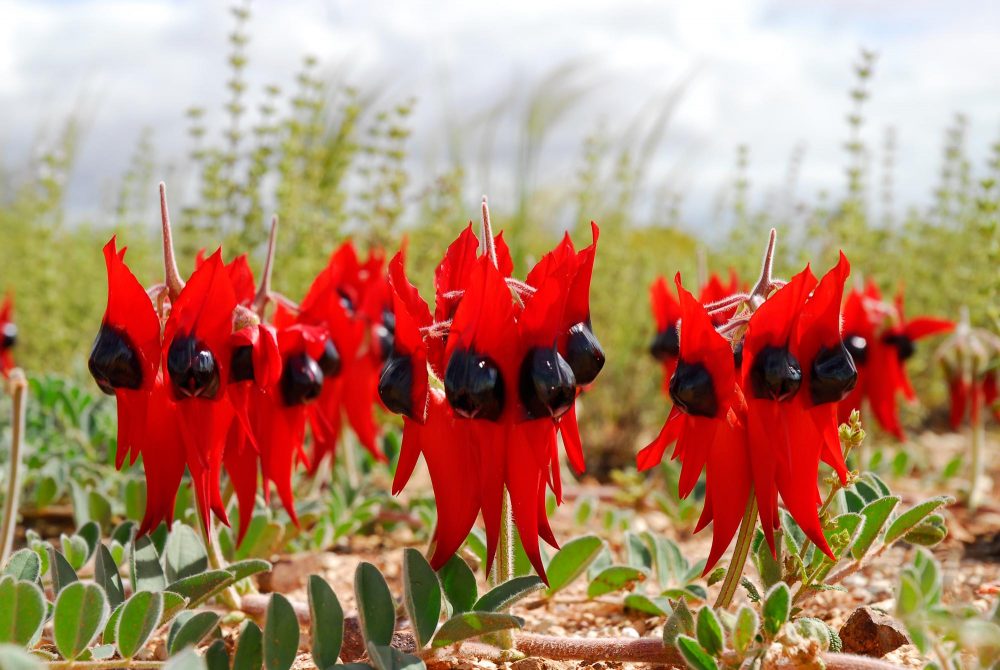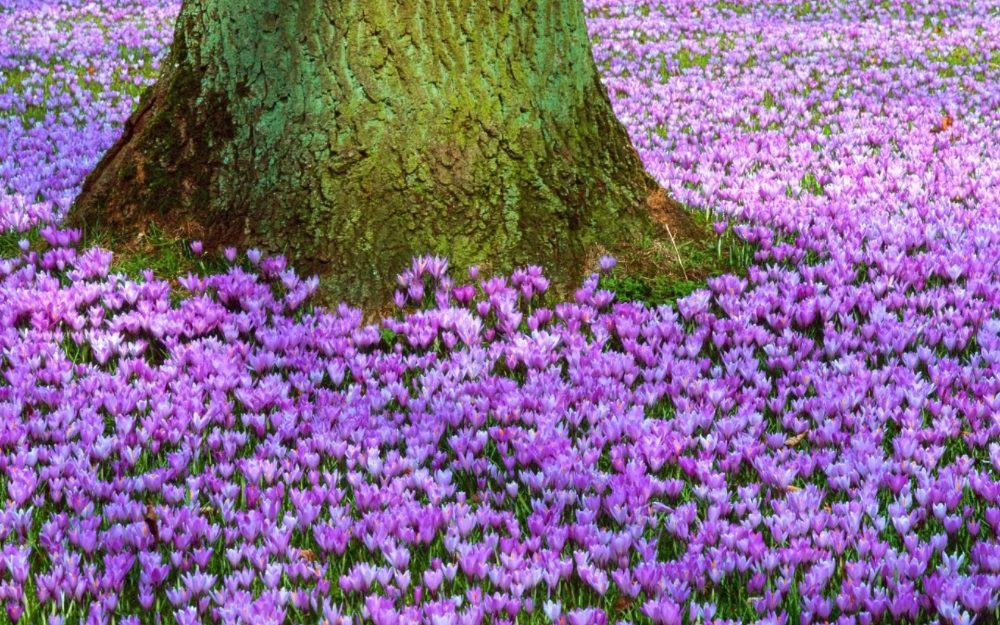OPALS™ is an abbreviation of Ogren Plant Allergy Scale, although it is sometimes said to mean Ogren Pollen Allergy Scale. The scale runs from 1-10, where 1 is allergy free, and 10 is the worst, the most allergenic.

Note: 1 is least allergenic and 10 is most allergenic.
In each of the ten examples below, one particular plant or plant species is used to illustrate each degree of ranking. Reasons are given, positive or negative, or often both, to explain (roughly) how each ranking is determined.
1. ‘Autumn Glory’ red maple (Acer rubrum ‘Autumn Glory’): ‘Autumn Glory’ is a female tree, traps pollen from male trees, produces no pollen itself, does not have spores or sharp hairs, has no sap or smell that causes allergies, is winter-hardy, is disease-resistant, is widely adapted, and doesn’t cause allergies.
2. Petunia hybrids: A very limited number of people may; on rare occasion, react to the smell of Petunia flower, and the flowers do produce a small amount of pollen. On the plus side, the pollen grains are large, sticky, and heavy; the petals are large and brightly colored; the plants are insect-pollinated; the stamens are hidden deep inside the flowers; the ratio of pistils to stamens is good; and the plants are not known to trigger any skin allergies. All in all, petunias are of very low allergy potential and perfectly safe.

3. Pinks, carnations, dianthus species: These present very little opportunity for pollen allergy, are not closely related to families of highly allergenic plants, are insect-pollinated, are both perfect-flowered and complete-flowered, have brightly colored large petals, have full sets of sepals, and have sticky pollen that is heavy and moderately large. Occasionally, certain species such as clove pinks, can trigger some minor allergy from their fragrance, and people who frequently handle Dianthus (usually carnations) as cut flowers on rare occasions get dermatitis from the sap. The carnations, pinks, and Dianthus are allergy-friendly, safe garden plants.
4. Night-blooming jasmine (Cestrum nocturnum): This plant is perfect-flowered has large, sticky pollen; is insect-pollinated; has rich nectar sources; and is not known to cause skin rashes. But, Cestrum also has a powerful fragrance that can trigger allergies, especially if it is planted too close to bedroom windows. The pollen, while not plentiful, is nonetheless poisonous. The flowers are also numerous and small. A substance that is poisonous (toxic) will negatively affect anyone who ingests or inhale it. Pollen that is allergenic will usually affect only those with susceptible allergies. Planted in the right place, Cestrum should cause next to no allergy problems; in the wrong place, it could.
5. St. John’s wort (Hypericum species): This is perfect-flowered; has large, brightly colored petals and full sets of sepals; has rich nectar sources; and is not in a family with numerous highly allergenic relatives. However, Hypericum has numerous male stamens, fully exserted stamens, produces considerable pollen, is pollinated by both wind and insects, and causes often fatal photodermatitis in animals that eat it. Not a pet-safe plant, but overall, not a plant with large potential for allergy. Contract allergic dermatitis is possible from hypericum.
6. Female Chinese tallow tree: This tree is disease-resistant where adapted, produces no pollen, and will trap pollen from male Sapium trees. The sap and VOCs from the stems and leaves, however, give it the potential to be a strong allergen. The tree is in a family well known to have many highly allergenic members (Euphorbiaceae), and potential for cross-reactive allergy, especially to the sap, is considerable. People with an allergy to latex have an even greater chance of reacting to Sapium. Male Sapium trees are ranked much worse, 10.

7. Boxwood (Buxus species): Boxwood is imperfectly flowered and the flowers produce considerable pollen per flower. On the plus side, boxwood plants are often sheared hard each year, and this will remove much of the flowering. On the negative side, boxwood pollen is a known allergen, and it is rarely possible to prune away all the flowers. The flowers are of white in color, very small in size, very numerous in number, all the stamens are exserted, and the ratio of pistil to stamens is quite high. On the plus side, these are rarely very large landscape plants. Contract with boxwood leaves and flowers can trigger itch or rash for some.
8. Most species of Eucalyptus: These trees grow very large and are often in bloom for eight to ten months of the year. Eucalyptus pollen is not exceptionally allergenic, however, exposure to this pollen is very common, and this increases allergy to it. Eucalyptus species ranked 8 make abundant pollen and most of it is amphiphilous, pollinated by both insects and the wind. The scent of the leaves can trigger allergies for some. Pollen grains of Eucalyptus are large and often form clumps, a strong plus factor, but more often than not these same clumps of pollen will have large numbers of tiny insects living on them. The insects (and their allergenic dander) will be inhaled along with the pollen. The insect-dander on the pollen is probably more allergenic than the pollen itself.
9. Primrose tree (Lagunaria patersonii): This tree is perfect flowered and insect-pollinated; it has nectar sources and large, brightly colored flowers. Negatives of this tree are that it has many stamens, all of them exserted (extended from the flowers) and the flowers are numerous. The bloom period is quite long, and the tree produces extremely large numbers of minute, needle-sharp stinging hairs that can cause asthma if inhaled, skin rash, and severe irritation to the eyes when contacted. Almost all of the hazards from the tree are highly localized, or confined to the immediate area surrounding the tree.

10. Male Brazilian pepper tree (Schinus terebinthifolius): Males are commonly used because they are seedless, fruitless, and thus “litter-free.” This tree produces large amounts of highly allergenic pollen every year and blooms for a long period of time. Although insects often visit it, it also produces airborne pollen. The flowers are tiny, pale yellow, extremely numerous, and all imperfect, unisexual, and male. The odor of the flowers is odd and strong, attracting flies, and may cause allergy for some. The odor of the leaves is odd, and the VOCs from the crushed leaves can trigger inhalant allergies. The sap or simple contract with the leaves or flowers of these trees can cause persistent, delayed-reaction skin rash that is very similar to that triggered by its relatives, poison ivy and poison oak. Crushed leaves from this tree produce volatile oils that can trigger skin allergies. Fumes from the wood can cause severe allergy or asthma if it is burned. The species itself is highly invasive in some areas. Male Brazilian pepper trees are large and long-lived and bloom profusely at an early age. Allergies to the pollen and odors of this tree and all male members of the Schinus family are well documented and common. The trees are widely planted and are in the cashew family, known to contain some of the most highly allergenic trees, shrubs, and vines in the world.
OPALSTM (Ogren Plant Allergy Scale) is now used by, among others, the American Lung Association and the USDA Urban Foresters and it measures the allergy potential of all garden and landscape plants.
Disclaimer
The Content is not intended to be a substitute for professional medical advice, diagnosis, or treatment. Always seek the advice of your physician or other qualified health provider with any questions you may have regarding a medical condition.


